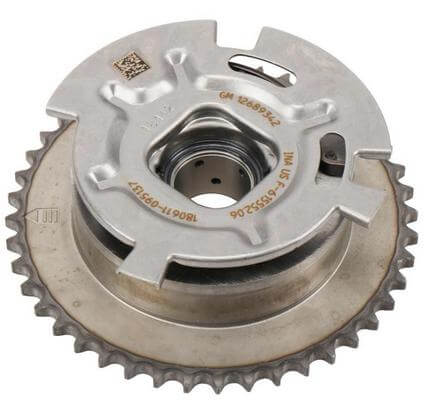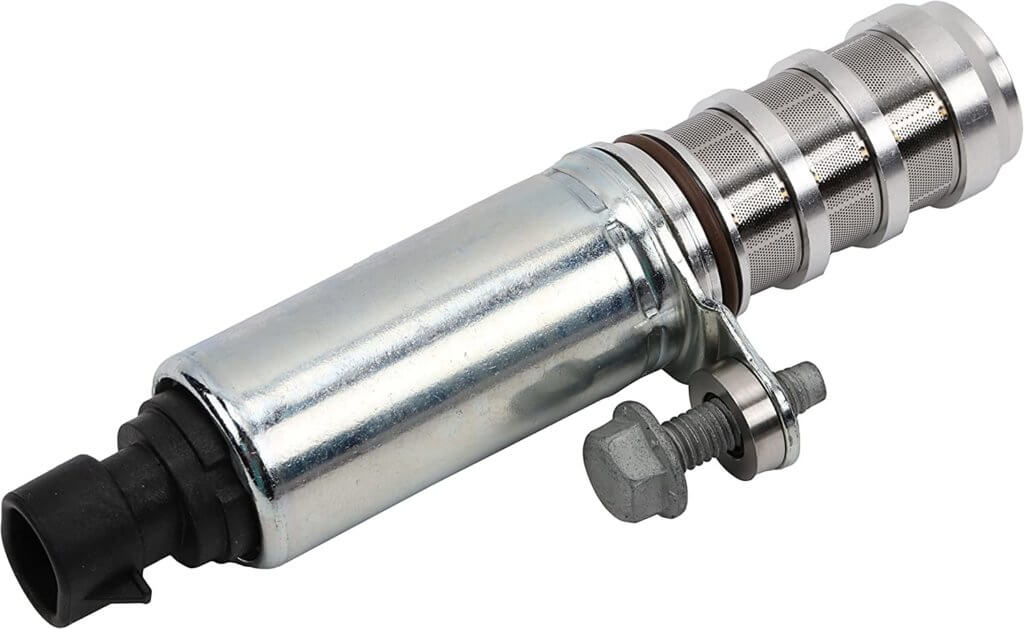P0011, P0014
P0011, P0014
Diagnose and fix P0011 or P0014
P0011 is: Intake Camshaft Position System Performance and P0014 is: Exhaust Camshaft Position System Performance.
Both of these codes relate to the variable valve

VVT camshaft phaser
timing (VVT) system on the engine. VVT allows the computer to advance or retard camshaft timing to achieve optimal engine performance and optimal emissions. The system operates the advance/retard mechanism by filling or emptying oil chambers in the VVT phaser located at the front of the intake and exhaust camshafts.
The VVT solenoid pulses motor oil into the phaser and the solenoid is a common failure point.
However, since the computer uses pulsed oil to move the VVT phaser, using the correct viscosity oil is critical to the proper operation of the system. In addition to using the correct oil viscosity, oil change intervals are also important as sludge buildup can also cause an P0011 or P0014 trouble code.

VVT solenoid. Notice the screens over the oil passages. Any sludge buildup on the screens will cause a P0011 or P0014
How the ECM sets a P0011 or P0014 trouble code
The ECM commands a pulse width modulated operation of the VVT solenoid and monitors camshaft timing to see if the expected movement occurs. If the ECM detects the difference between the desired camshaft position angle and the actual camshaft position angle is greater than 6 degrees for greater 13.5-seconds it will set either a P0011 or P0014 trouble code.
Step-by-step diagnostics
1) Engine oil condition has a major impact on the camshaft actuator system. Start by checking engine oil level. Next check engine oil condition. If the engine has been operating when low on oil, the oil may have degraded to the point where the light fractions have vaporized and the remaining oil is too viscous to properly operate the VVT system. In that case, perform an oil and filter change before proceeding.
2) Next, check resistance on the intake or exhaust VVT solenoid. Using a meter set to Ohms, look for 8-13 ohms. If you don’t set that value, replace the VVT solenoid.
3) If you do, check for 0 resistance to ground from each VVT solenoid terminal. If you find resistance, replace the solenoid.
4) Check the VVT solenoid harness for opens, grounds, and shorts to voltage.
5) Check for loose terminal connections at the ECM and the cam actuator solenoid.
If the VVT solenoid fails any of the tests, replace the solenoid. Then clear the trouble codes and drive the vehicle to see if the code returns.
©, 2022 Rick Muscoplat
Posted on by Rick Muscoplat